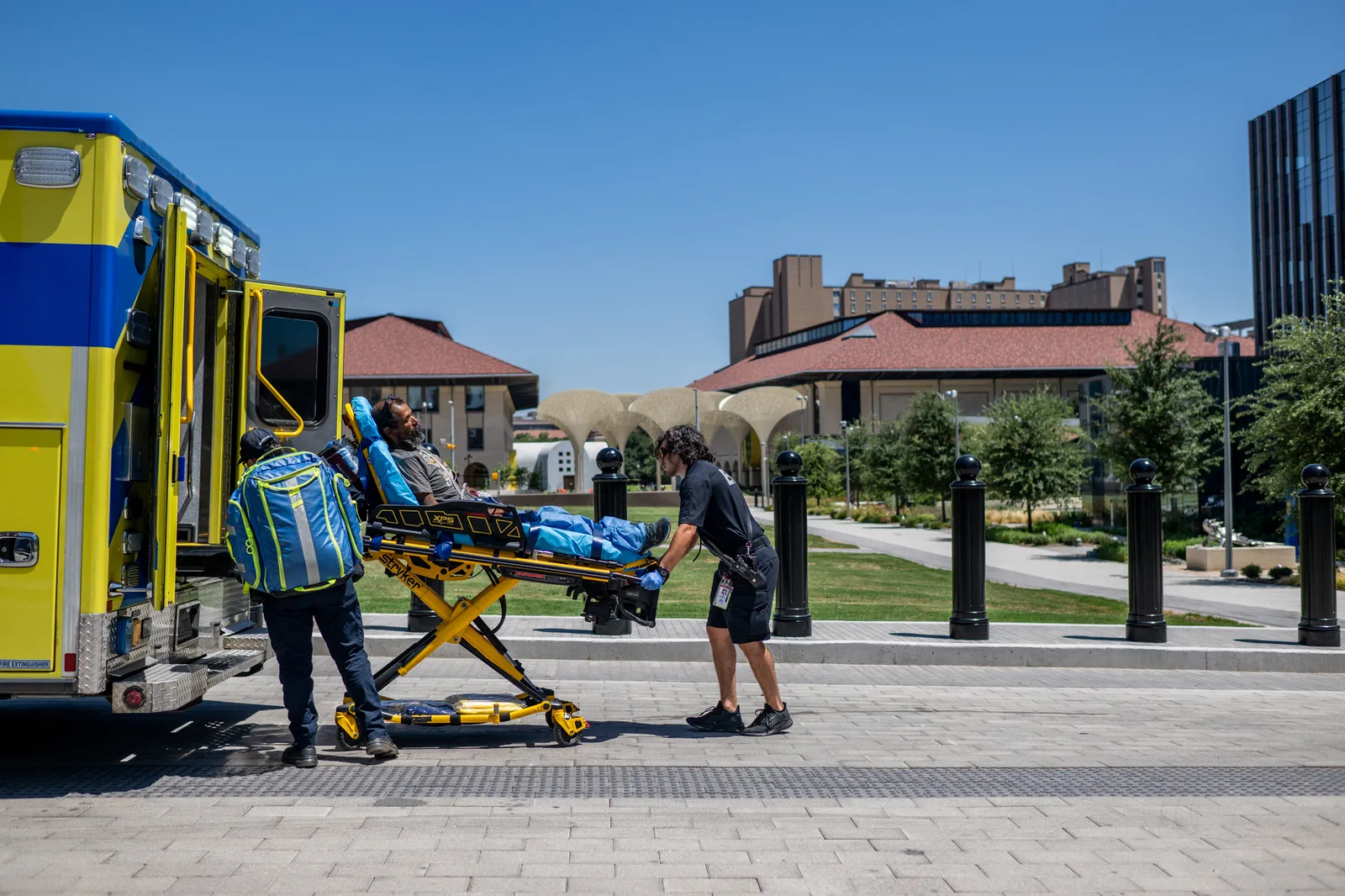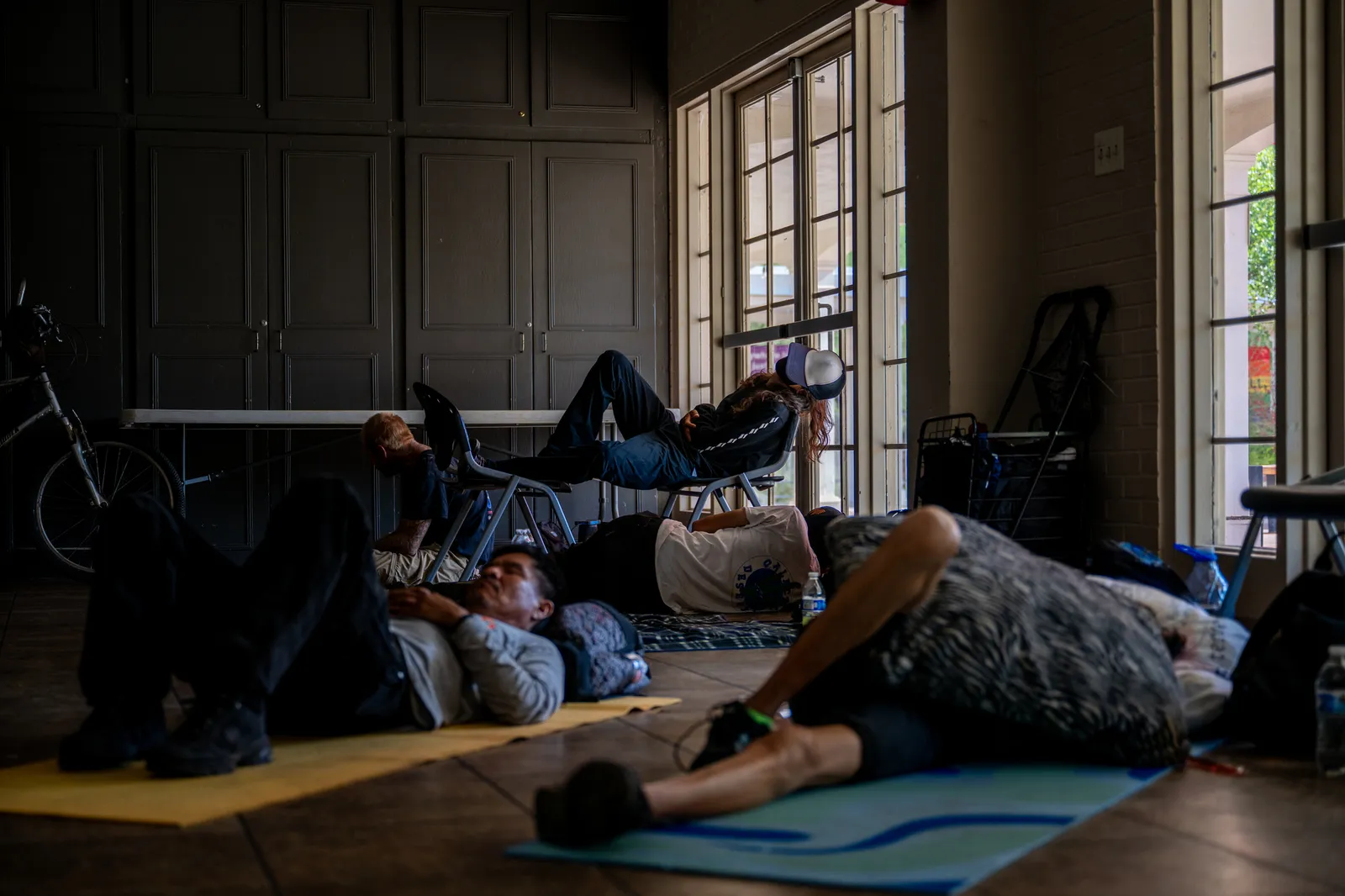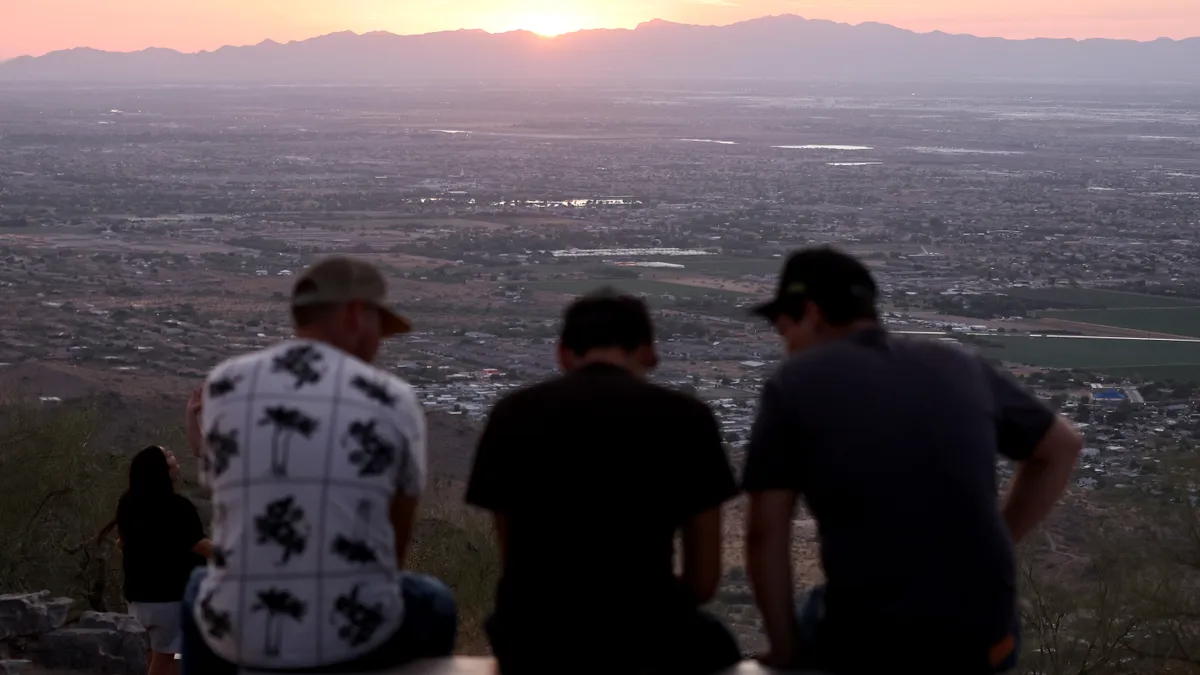Asking what Miami-Dade County’s chief heat officer does in the winter is like asking what Santa Claus does in the summer. Immediate extreme heat response might not be needed, but numerous plans and preparations are in the works as the clock ticks closer to summer 2024.
“It’s lovely, windy, breezy weather right now,” the Florida county’s chief heat officer, Jane Gilbert, said in a December interview. “But it won’t be in May.” Communications strategies need to be refreshed, a meeting assessing last summer’s performance must be planned, and the county will continue seeking ways to bring homeowners and renters more energy-efficient, affordable cooling. And that’s just the beginning of her team’s to-do list.
Cities worldwide are increasingly focused on planning for summers with extremely high temperatures as ballooning greenhouse gas emissions drive climate change. 2023 was the world’s hottest year ever recorded — a title it may not hold for much longer, with the National Oceanic and Atmospheric Administration warning that 2024 has a one-in-three chance of being warmer.
“It’s lovely, windy, breezy weather right now. But it won't be in May."

Jane Gilbert
Miami-Dade County Chief Heat Officer
Perhaps the most time-sensitive heat-related question currently facing U.S. cities is what needs to happen before this summer arrives to minimize heat-related death and illness as much as possible. Now is the time to craft these plans, said Ladd Keith, an assistant professor at the University of Arizona’s School of Landscape Architecture and Planning.
“Winter is the best time to plan for heat,” he said. “We don't want to be caught unaware when it's already hot.”
That’s a new concept for many cities. “A lot of cities don't start thinking about this until maybe the spring, but they're starting to get better,” said Victoria Ludwig, senior climate specialist at the U.S. Environmental Protection Agency’s Office of Community Revitalization.
Trends in extreme heat planning
In what Keith called a “fairly new development,” more cities are beginning to hold wintertime “heat summits” that bring together stakeholders to discuss strategies for the upcoming summer. “The city of Tucson, where I’m at, we’re going to hold a fairly large heat summit at the end of January to make sure that we’re even more prepared for the summer of 2024,” Keith said.
More cities and states also are developing “heat action plans” that not only chart a path forward on reducing the urban heat island effect in the longterm but also spell out emergency response plans for heat waves. “That’s still, unfortunately, a very innovative idea that you have all of that mapped out and planned,” Keith said.
Even though planning for extreme heat is new for many cities and states, “there are enough good models out there that folks don’t have to reinvent the wheel,” he said.
Education campaigns are also a key component of cities’ heat planning efforts. In Miami, Gilbert said her communications team is using this winter to consider ways to further target messaging toward the most vulnerable residents.
“What can we do for pregnant people? What can we do for parents of very young children? What can we do for athletes?” she asked. Already, her team has two new campaigns planned for this spring: one geared toward outdoor workers and their employers, and another focused on no- and low-cost ways people can keep cool at home.
Gilbert also noted potential plans to train the people who do outreach to the unsheltered homeless community to notice signs of heat-related illness and understand when such illness requires a 911 call.

Ludwig urged cities to think beyond classic education tactics like teaching residents the definition of a heat warning or publishing a list of cooling centers. Much of the public doesn’t think of themselves as vulnerable to extreme heat, Ludwig said, and she encouraged local governments to step back further and conduct a community involvement process to understand people’s perceptions of heat risk.
Cooling center caveats
Cooling centers have become more common in recent years as a way for cities to protect people during heat waves. But Gilbert said the jury is still out on how much Miami-area residents use these locations, which are often located at libraries and recreation centers.
“Certainly, they're used by our unsheltered population, but those are only two or three sites that are primarily used in the county, and we have over 30 sites,” Gilbert said. Her team is currently evaluating how many people used these resources in 2023, but it can be difficult to collect data on locations like libraries that are also open for other uses, she said.

“Our advocacy groups get very focused on making sure we have them well distributed and open and whatnot, but it's not clear to me that that's where people go to cool off when they’re AC insecure,” Gilbert said. “They stay where they are because they don't want to go somewhere, or they go to a family member's house, or they might go to a mall.” She added that the county could do better at ensuring the public is aware of the sites.
Keith also noted the caveats of cooling centers, which he said are sometimes considered a silver bullet during heat waves. While they are “super important” for those who don’t have thermally safe housing or are unhealthy, cooling centers are “a Band-Aid for the fact that we don't have safe housing for the unhoused or … for a lot of folks that may live in poor-quality homes that don't have air conditioning.”
“Our advocacy groups get very focused on making sure we have [cooling sites] well distributed and open and whatnot, but it’s not clear to me that that’s where people go to cool off when they’re AC insecure.”
Jane Gilbert
Miami-Dade County Chief Heat Officer
Securing funding for New York City’s cooling center program, however, is a “top-of-the-line item” for WE ACT for Environmental Justice, said the advocacy group’s resiliency coordinator, Caleb Smith. While Smith agrees that cooling centers aren’t a silver-bullet solution, they said the city could significantly improve the sites and track how useful they are to residents.
“If people have to go [to a cooling center] because they don't have air conditioning, it should also be enriching in some way and should be informed by what the needs of community members are,” they said. “That takes time and consideration to hear from the community.”
“That's another reason why we actually need funding,” Smith continued. “We can’t just slapdash something together. It's not like a rainy day at recess, where [teachers] just pop in a movie.” The city could create a 311 call category for people to report feedback on cooling centers, Smith suggested.
"We don't have the luxury of picking and choosing between whether we deal with heat or cold anymore.”

Caleb Smith
Resiliency Coordinator for WE ACT for Environmental Justice
But WE ACT is also addressing the issue of people not having access to cooling at home by pushing for the city to adopt a policy establishing an indoor maximum temperature for tenants, similar to rights outlined for heating and running water. Last year, the New York City Mayor’s Office of Climate and Environmental Justice included the idea in the city’s strategic sustainability planning document, PlaNYC, and Smith anticipates that related legislation will be introduced at some point.
“This is just closing a gap that's been there because New York has traditionally been colder,” Smith said. “But we don't have the luxury of picking and choosing between whether we deal with heat or cold anymore.”
Playing catch-up in a warming world
The reality is that even if cities craft plans that meet the challenge of current heat risks, “we're still far, far behind with what we should actually be doing,” Keith said. “The goalpost is moving further out” as climate change worsens.
Cities are increasingly looking to longer-term strategies to offset higher temperatures, like adding green space and cool pavement. However, these interventions must be seriously scaled up to make significant differences in a neighborhood’s ambient air temperature, Ludwig said.
“To be frank, and that's because I've been in this field for 10 years, it needs to happen at a faster scale and a bigger scale because the problem is becoming more urgent,” she said. Local governments can take matters into their own hands by putting green or cool roofs on their own structures where it is technically feasible, Ludwig added.
Local governments “have control over that in their municipal buildings and facilities,” she said. “They don't need to go to a public meeting. They don't need to get the private sector” to take that step.

In the meantime, Keith predicts this summer will again strain cities’ social services, public health agencies and emergency management responses. “We'll probably see those important metrics, like heat-related deaths, continue to increase, unfortunately,” Keith said.
Cities that have invested in heat planning but continue to see rising deaths will need to provide clear, transparent answers to the public, he added. “Those deaths are going to continue to occur, even when we start to take what may look like big actions but actually are just the very beginning stages of planning and addressing heat,” Keith said.




















